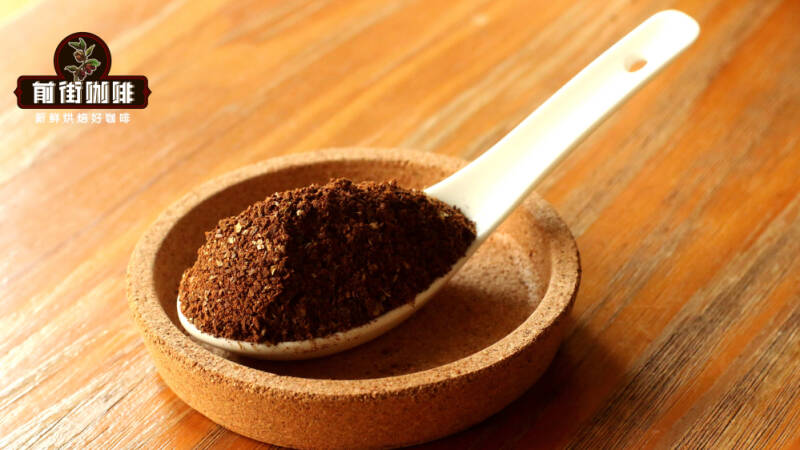What are "nourishing beans" and "waking beans" in coffee? Do the coffee beans have just been roasted and need to be left for a while before sealing?

If you want to have good flavor, you should choose freshly roasted coffee beans. This is a consensus we have reached for a long time; out of experience, when the coffee beans are "too fresh"(just roasted for 0 - 2 days), we will "cultivate the beans", that is, they will remain intact, and then brew and extract them after they are exhausted for a little, so that the flavor of the coffee will be better.
But recently, Qianjie noticed another method to "solve the problem that coffee is too fresh", which is to accelerate exhaust by grinding coffee beans into powder in advance and placing them at room temperature for dozens of minutes, or even a whole day. This can enable coffee to release flavor substances more evenly during the extraction process, and everyone calls this method "wake-up powder".

Why should you "wake up"?
Front Street has mentioned in many articles that coffee beans will produce a series of chemical and physical reactions during the roasting process. We can collectively call them the "Maillard Reaction," which includes storing a large amount of carbon dioxide in each bean. When they are first baked, the coffee beans will have a smoky and stimulating roasting taste, and the internal gas will be very strong. If they are brewed at this time, the gas will continue to emerge as hot water is injected into the powder layer, thus hindering extraction and flavor substances will also It will be difficult to dissolve, so the term "raising beans" appears.
But sometimes, the coffee beans are still in an "extremely fresh" state. For example, they have just been roasted or have only been roasted for 1 to 3 days. We are eager to taste it, but we don't want to be extracted by the influence of active gases. Someone proposed the concept of "wake up beans", that is, taking the coffee beans out of the bag or directly opening and sealing them, allowing them to come into direct contact with the air, thereby accelerating the emission of carbon dioxide. The specific waking time depends on the state and use of the coffee beans, and usually ranges from a few hours to a day.
But after all, the coffee bean is a complete individual and still has an airtight structure. Carbon dioxide can only be released slowly, so when it is exposed to the air for too long, it may cause the coffee bean to smell or become damp. Therefore, some people thought that they could accelerate the emission of carbon dioxide by pre-grinding, thereby eliminating the interference of this part of the gas.
Do raised coffee beans still need to be "awakened"? How to correctly "wake up" fans?
It is not difficult to find out here that whether it is "raising" or "waking", these are all measures we have to do when we are faced with very fresh coffee beans. In other words, if the coffee beans have been exhausted for several days, there is no need to take "wake-up" intervention. For example, the coffee beans shipped on Qianjie are roasted within 5 days. Coupled with the time spent on logistics, the beans you receive are usually 3 to 5 days after roasting. If you want to feel the coffee in good condition (freshness), you can start enjoying it.
But if the coffee beans that arrive in your hand are roasted within 3 days, and have a very obvious nasal choking taste or roasting taste after grinding, or the brewed coffee even has a full sense of dryness, it is most likely that the beans are too fresh. Due to this,"wake-up powder" at this time is inevitably a relatively efficient emergency measure.
But we need to know that after coffee beans are ground into powder, the surface area will be thousands of times larger than before, and the finer they are ground, the greater the increase in surface area will be. Studies have shown that within a minute and a half after coffee beans are ground into powder, nearly 70% of the gas in them has been exhausted. Therefore, there is a certain risk in adopting the "awakening powder" method, because although it helps us speed up the exhaust process, it also accelerates the evaporation of the aroma substances in the coffee. If you are careless, the result will be more than the gain.
In this regard, Qianjie recommends that everyone try not to be too radical when adopting "wake-up powder" and can adjust it in combination with the aroma. For "too fresh" coffee beans, we first grind them into powder and cover them to avoid foreign matter falling in, and then place them at room temperature for 5 to 20 minutes. Smell it every 4 to 5 minutes and feel the changes at each stage until the smell of coffee powder gradually becomes clear and soft from the nose and stimulation, and we can start brewing.
Important Notice :
前街咖啡 FrontStreet Coffee has moved to new addredd:
FrontStreet Coffee Address: 315,Donghua East Road,GuangZhou
Tel:020 38364473
- Prev

Hunting for surprises?! Aunt Shanghai launches "Xiao Gong Ju Doll" causing controversy
▲ Click to pay attention| Daily Boutique Coffee Culture Magazine Coffee Workshop Recently, Aunt Shanghai launched a new product "Five Red Vitality Slow Care Bottle" and designated a peripheral package for this new product online. Consumers who purchase this package can receive a "Xiaogongju Plush Doll". It is understood that Aunt Shanghai has been focusing on "raising children" recently
- Next

Well-known tea brands have been exposed to the closure of many stores?!
▲ Click to pay attention| Daily Boutique Coffee Culture Magazine Coffee Workshop Recently, a netizen posted that a store opened by Grandpa Without Tea in Wangfujing Square in Zibo, Shandong Province, had quietly closed last week. The post also mentioned that another grandfather's non-tea store in Zibo Jingkai Wuyue closed earlier. in addition
Related
- Being chased out of the rain in front of Starbucks?! Store: Sheltering from rain under umbrellas poses a safety hazard
- The white moonlight has changed?! Lucky launches "Big Winter Pear American"
- Hand-brewed coffee three-stage method, high-sweet and universal brewing method to share! What does the high sweet water level of hand-brewed coffee mean?
- What is the difference between raw, refined and full espresso coffee? How to extract espresso and taste good?
- A complete list of coffee bean names and their meanings! What is Yejia Shefi coffee? Where is Mantelin coffee?
- What grade does Arida Manor Kaduai coffee beans belong to? What treatment is Arida ASD slow anaerobic sun exposure?
- The milk tea cup becomes smaller?! Overlord Tea Girl launches a new "Return to Yunnan" series
- Accused of selling counterfeit and high-priced coffee beans! Well-known boutique coffee brand "Oukelao" bowed and apologized!
- How to make espresso dumplings? Can I eat coffee and glutinous rice balls together?
- Save the unformed and stagnant powder cakes in one second! What is the problem with stagnant water in the powder bowl of the espresso machine?

